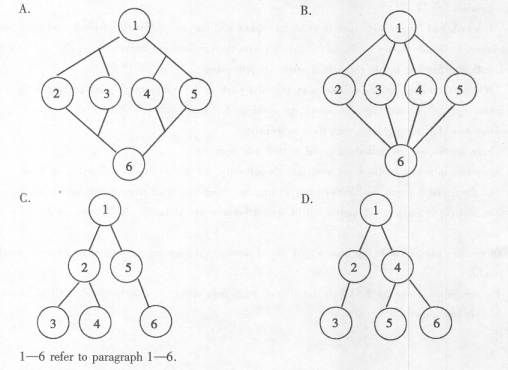阅读理解
TOKYO--- A child-like robot that combines the roles of nurse, companion and security guard is to go on the market to help the growing ranks of elderly Japanese with no one to look after them.
The "Wakamaru" robot can walk around a house 24 hours a day, warning family, hospitals and security firms if it perceives (觉察) a problem. It will, for example, call relatives if the owner fails to get out of the
bath.
Cameras implanted in the "eye-brows" of the robot enable it to "see" as it walks around an apartment. The images can be sent to the latest cellphones, which display the pictures.
Wakamaru, which speaks with either the voice of a boy or a girl, is also designed to provide
companionship, greeting its "papa" when he comes home.
It is the first household robot able to hold simple conversations, based on a vocabulary of around
10,000 words. It cannot only speak but can understand answers and react accordingly.
Wakamaru will inform a security firm if there is a loud bang or if an unknown person enters the house
while the owner is out or asleep. It can recognize up to 10 faces.
But like most robots it cannot climb stairs.
Mitsubishi Heavy Industry, which developed Wakamaru, adapted Wakamaru from robots it made.
The idea to use the technology in the home came from a company employee.
The technology has gained nation-wide publicity in Japan among increasing concern over how to look
after the ever-growing number of old people. The life of Japanese women has shot up to almost 85 years,
the highest in the world.
At the same time, extended families are being replaced by nuclear families. This has left many Japanese anxious about their elderly parents, whom they rarely see because of their long hours at office.
1. Which of the following is true about Wakamaru?
A. It is used in a security firm.
B. It cannot speak but can understand answers.
C. It can go up and down the stairs easily.
D. It can recognize as many as ten faces.
2. The purpose of this passage is ______.
A. to introduce a new product
B. to solve the aging problem
C. to tell people how to use robot
D. to show the rapid development of technology
3. What can we infer from the passage?
A. The robot must be very expensive.
B. The robot is likely to have a promising market.
C. The robot has given the Japanese a chance to live longer.
D. The nuclear families have left many elderly Japanese anxious.
4. What is the best title of the passage?
A. The Latest Development of Technology
B. Japanese-built Robot to Help the Old
C. Vast Market of the New Robot
D. Japanese Robot and the Aging Society
1-4: DABB

